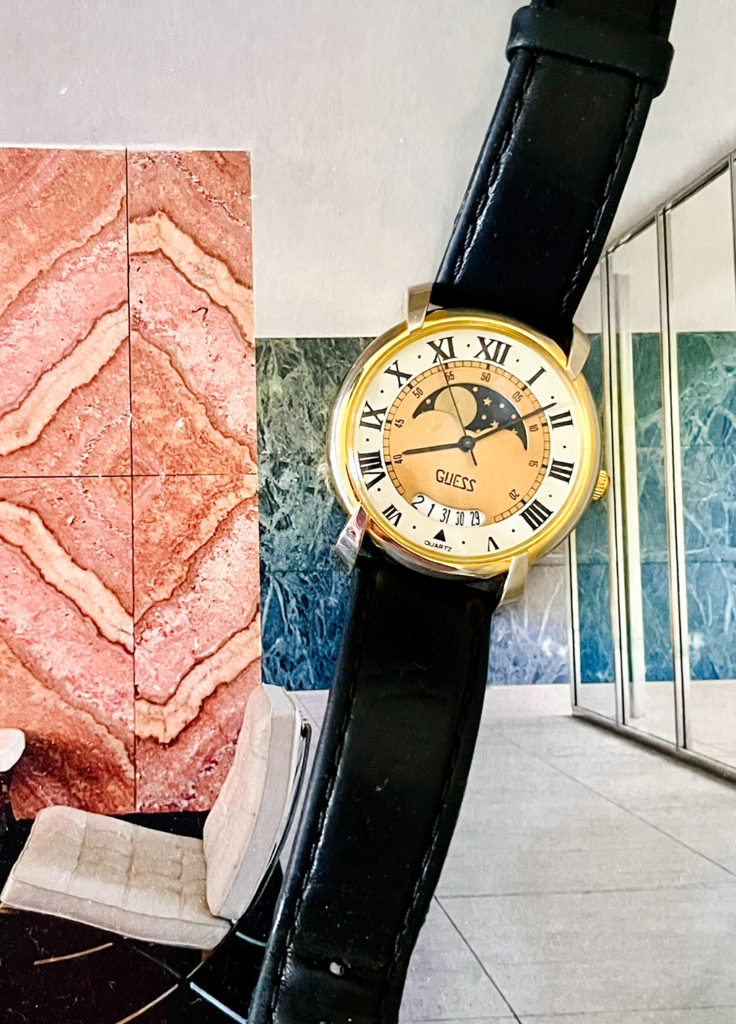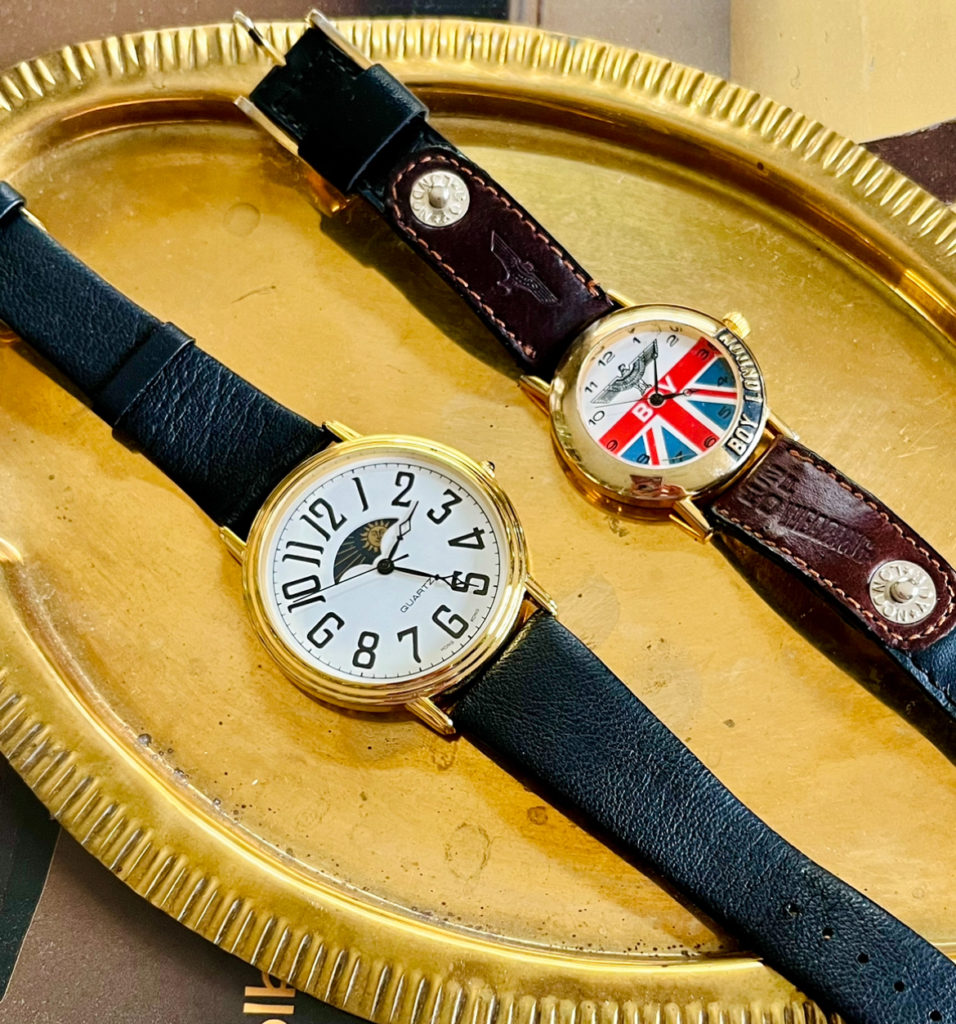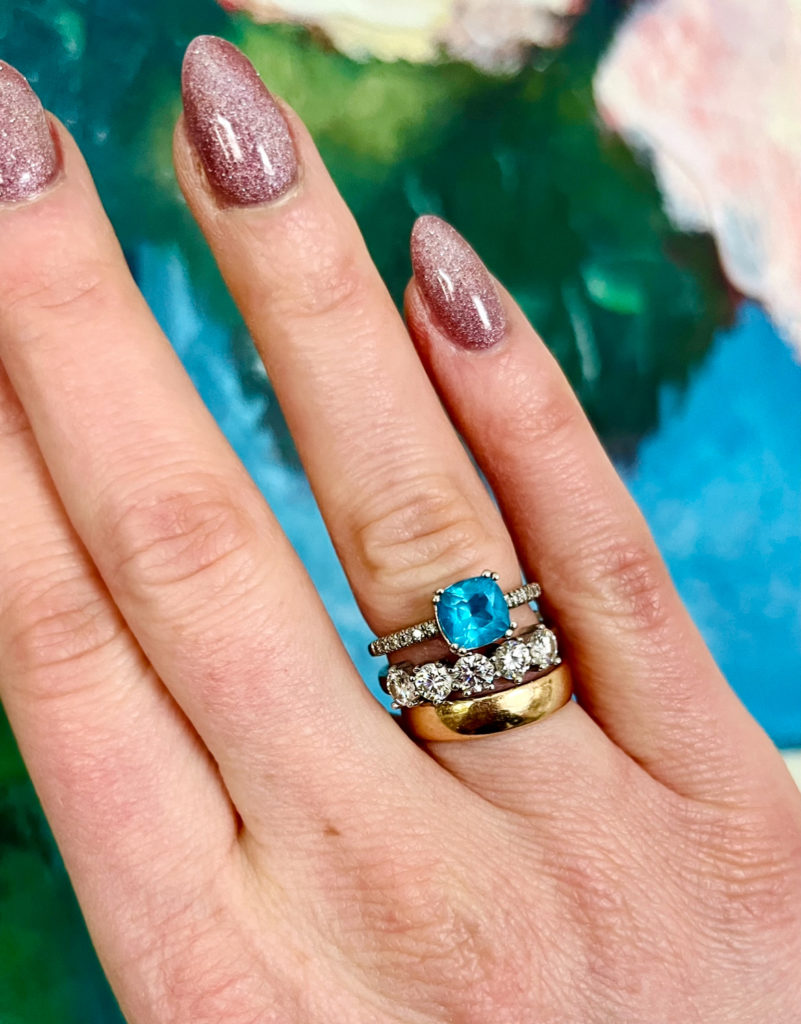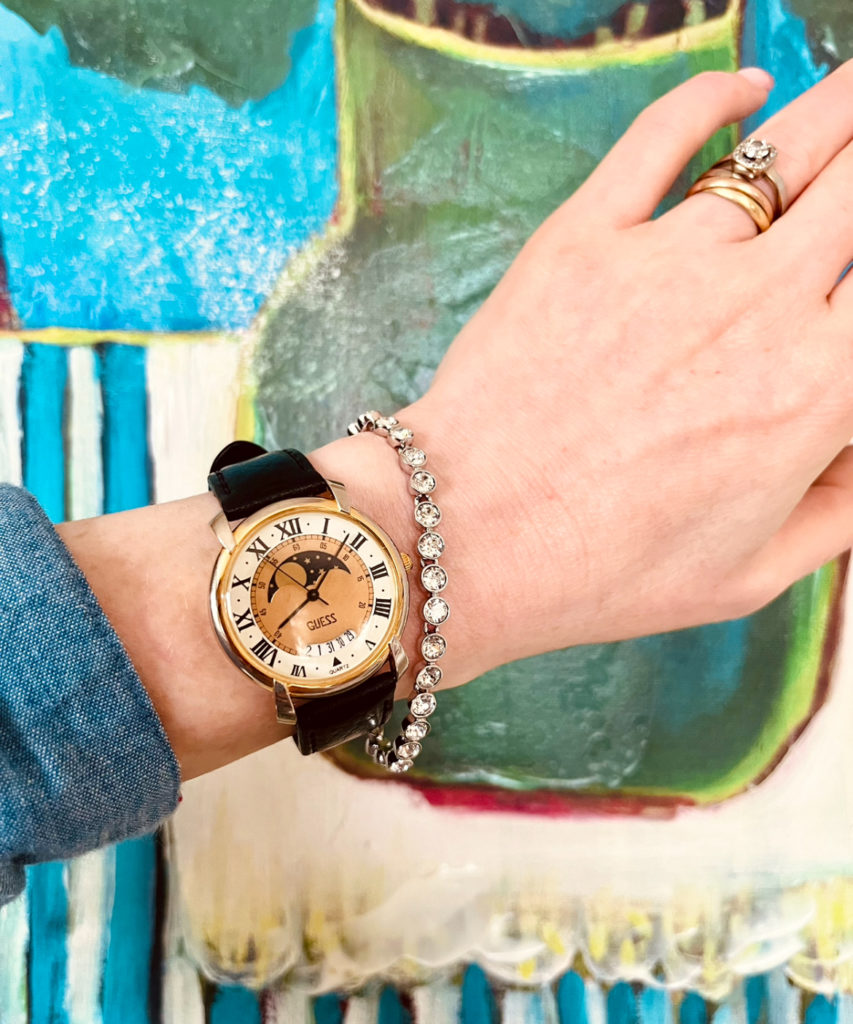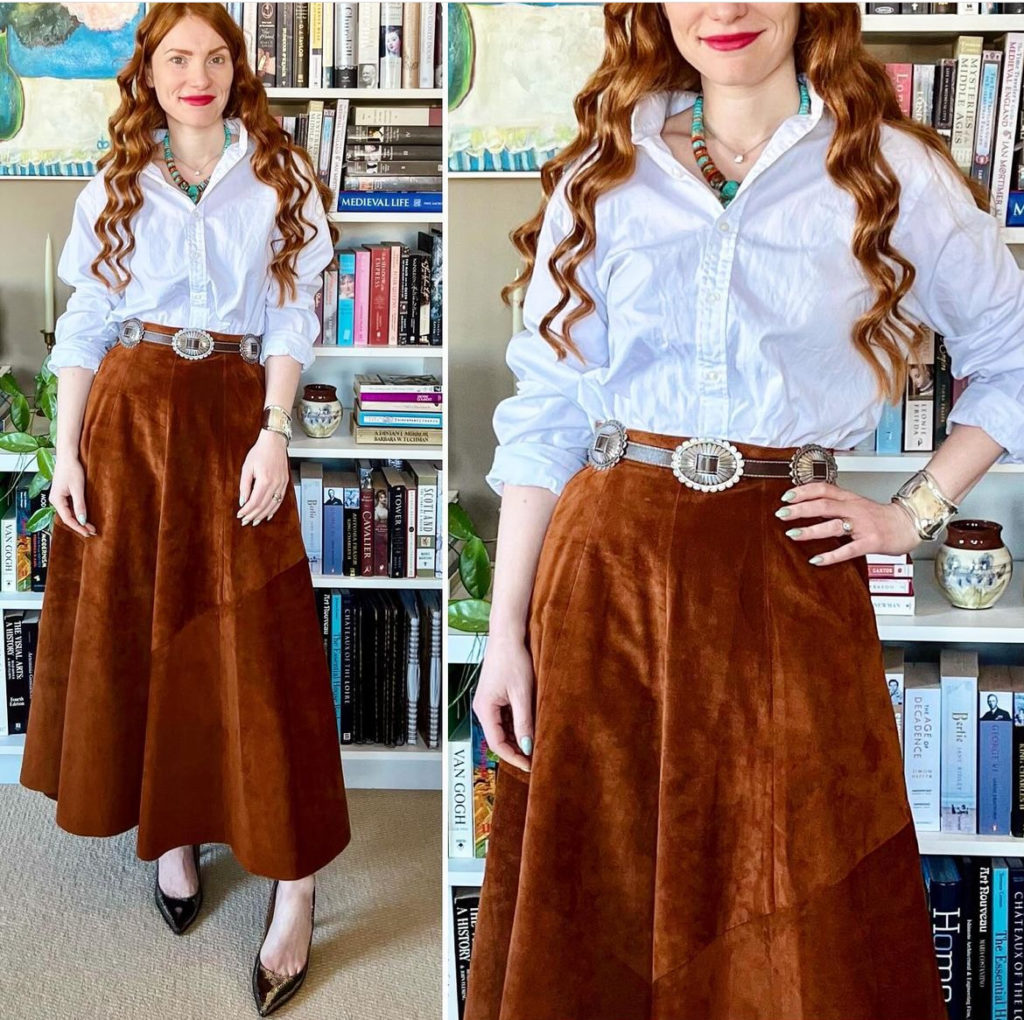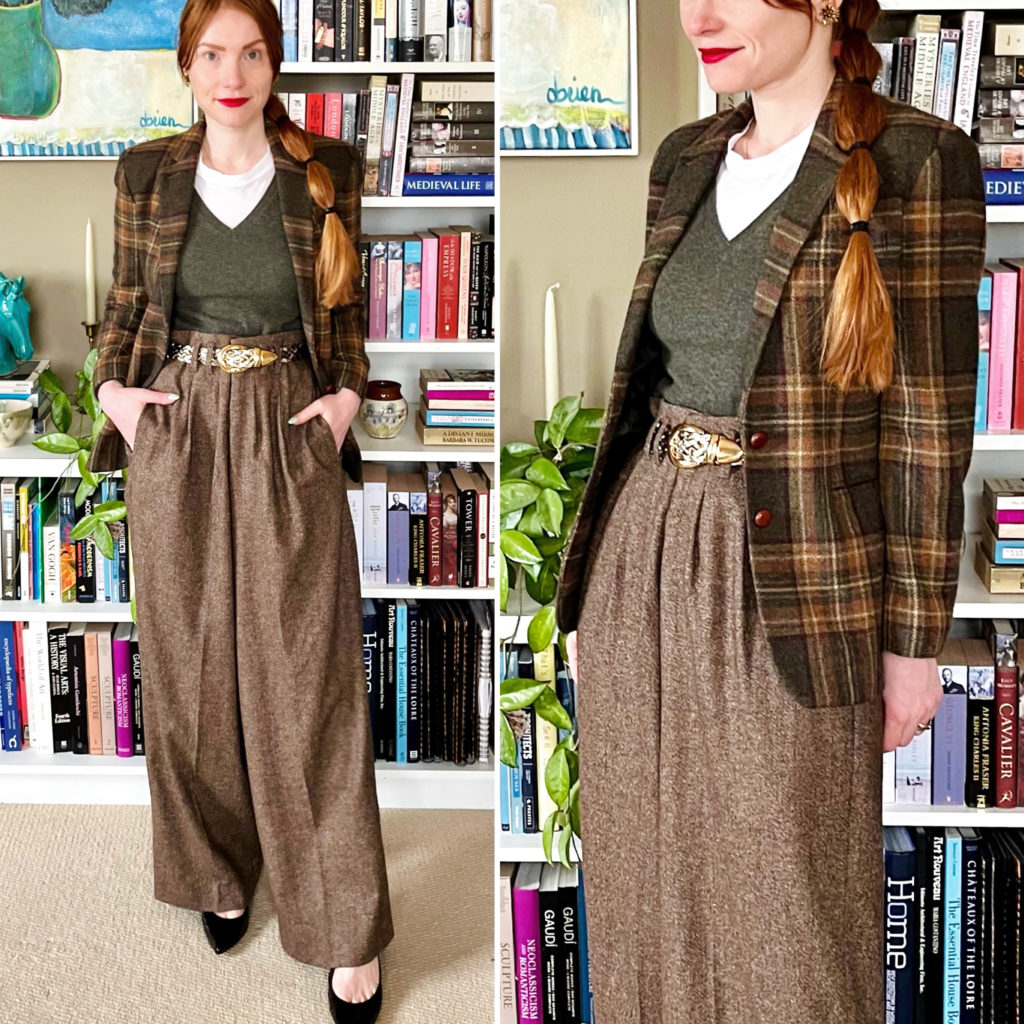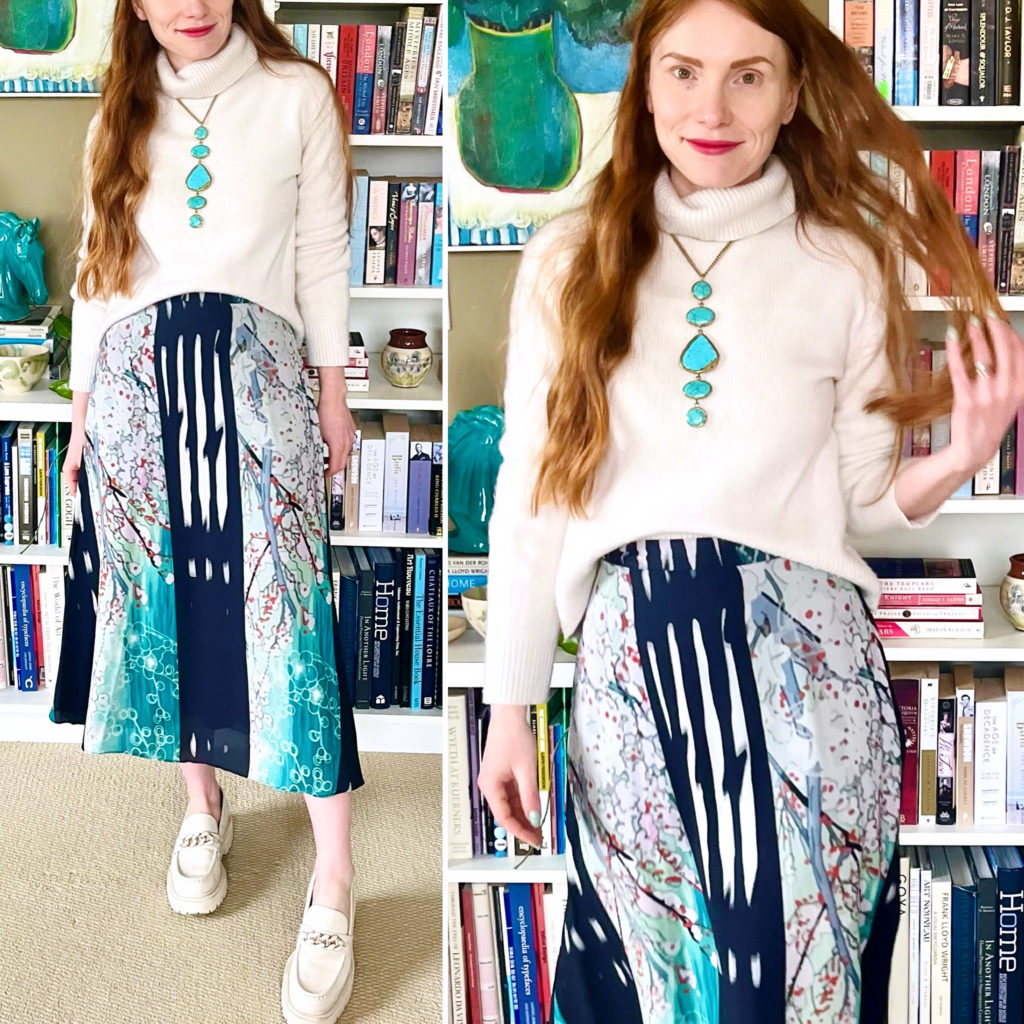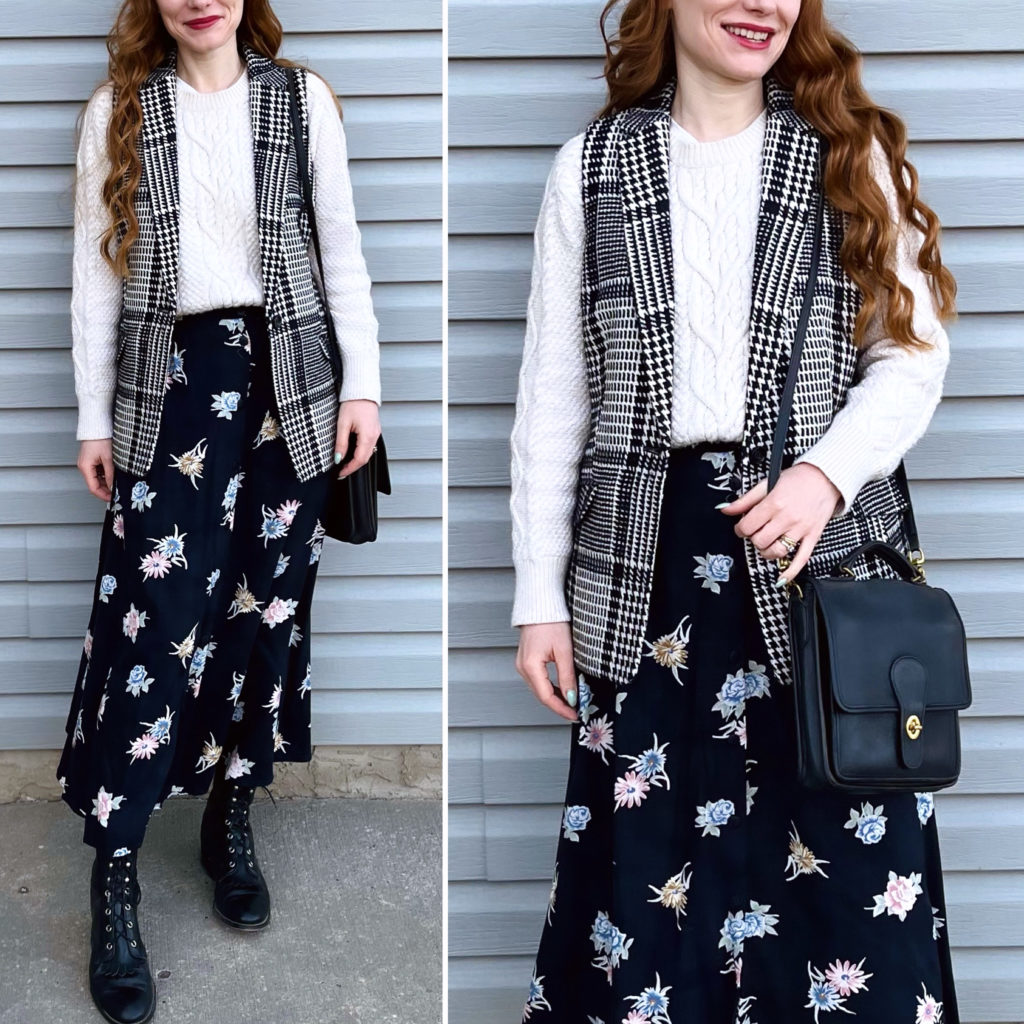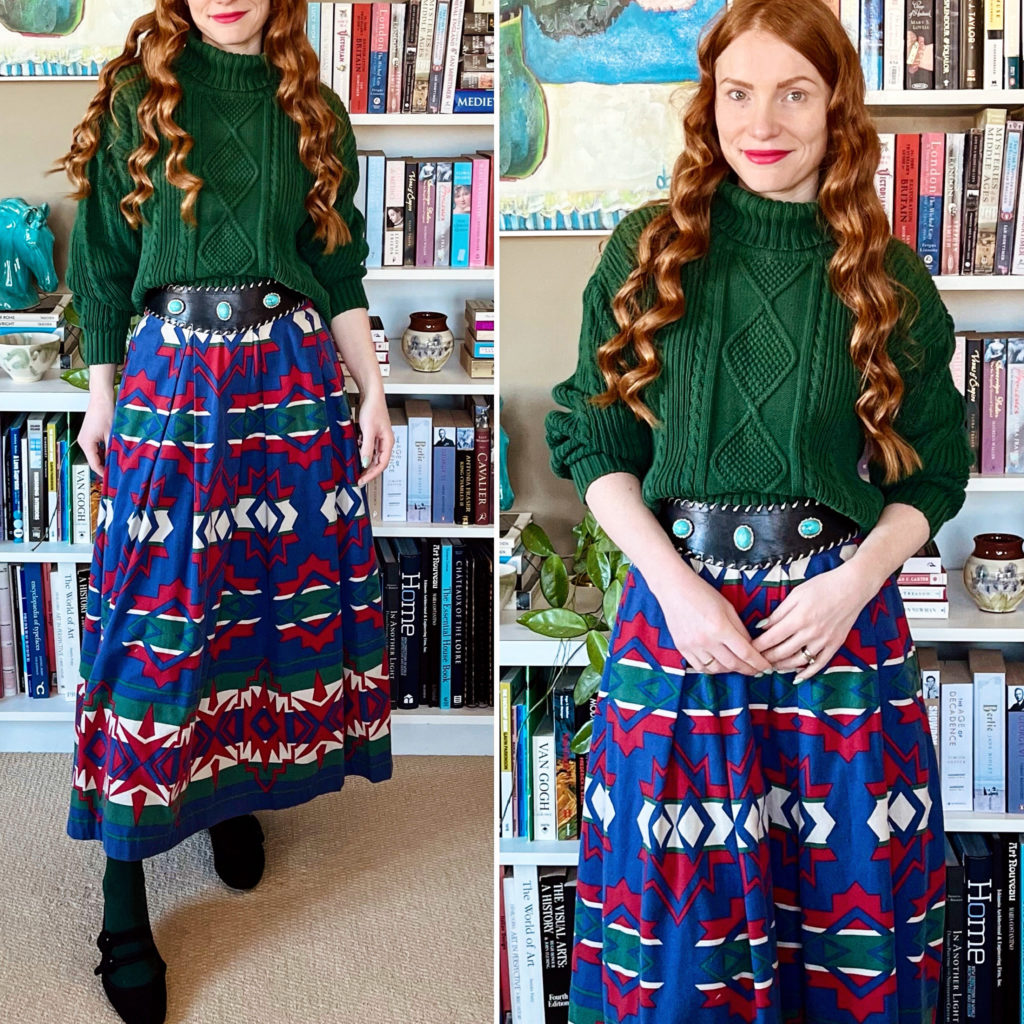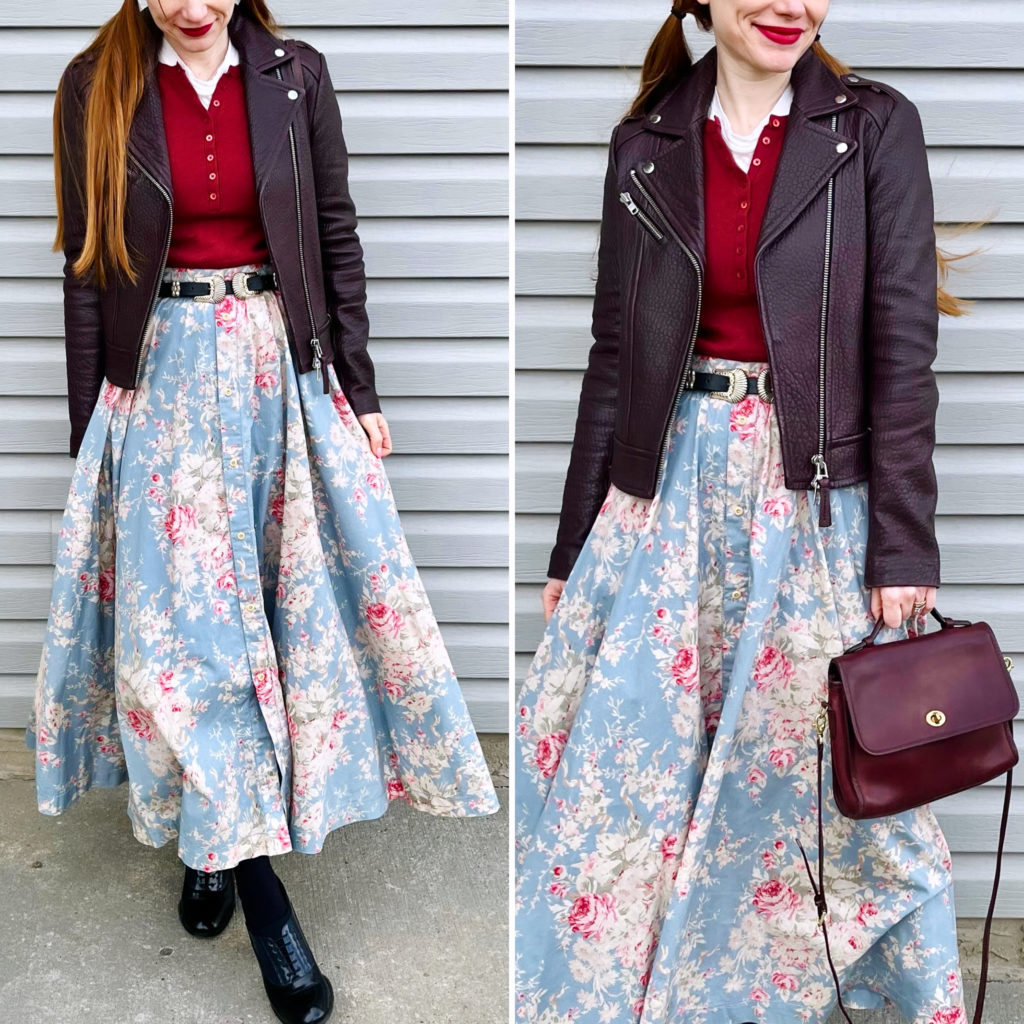
Details: H&M top (retail), Everlane sweater, Mackage jacket, Ann Marino shoes (all thrifted), Ralph Lauren skirt (eBay), Coach bag (Poshmark)
Thoughts: It’s almost time to bring back my summer wardrobe, and I got a jump start because I’ve been dying to wear this skirt again since the fall. I can confirm, I’m still madly in love with it. Decided to make the most of the transitional weather, and pair it with a leather jacket for a bit of nice juxtaposition. This worked out well, as it allowed me to pick up with reddish-pink from the skirt and make it my “unifying” colour.
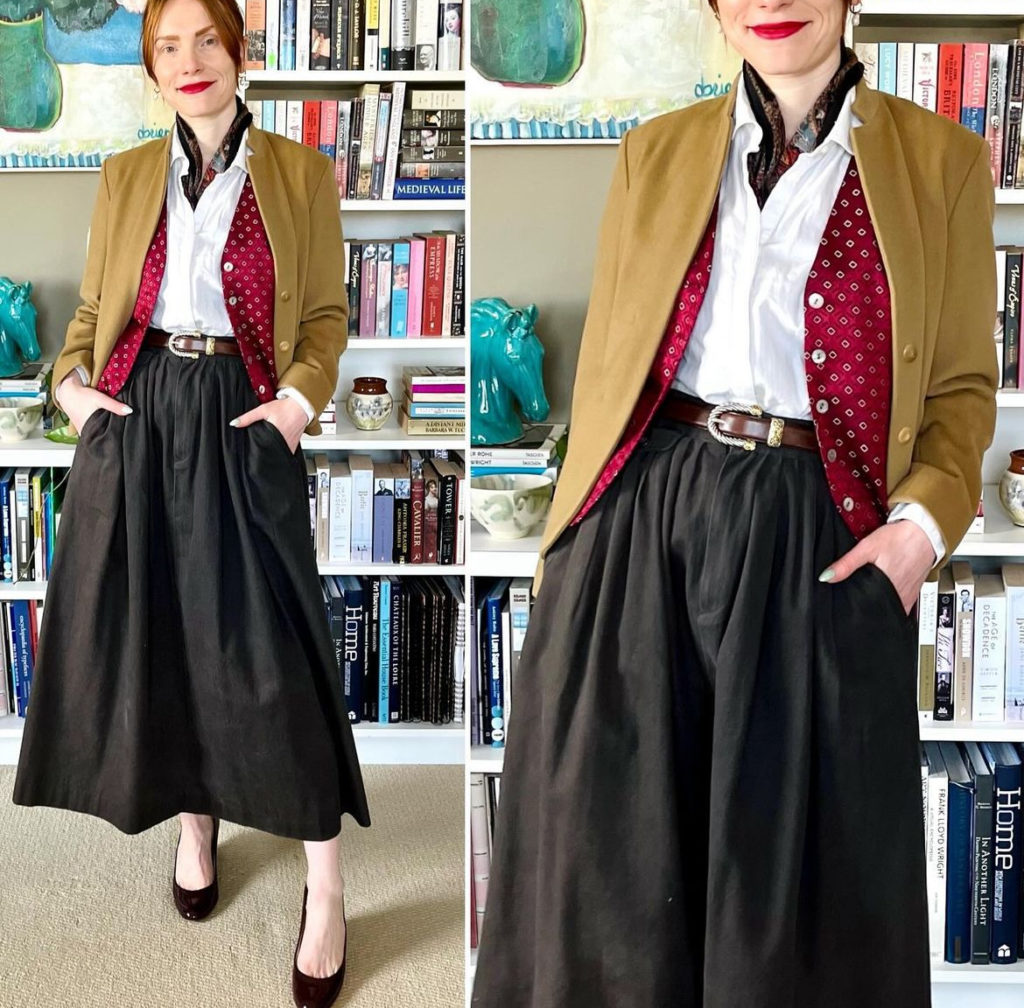
Details: Ralph Lauren shirt, Talbots vest, Jil Sander coat, Fossil belt, Echo scarf (all thrifted), Ralph Lauren skirt (secondhand & gifted)
Thoughts: This is it, friends! This is the Jo March outfit I have been working towards since December 2019. We have reached Peak Jo March. I finally found the patterned red silk waistcoat I had been looking for all this time because I was convinced it was what Saoirse Ronan had worn in the movie. I say “convinced” because I was wrong, somehow. When I pulled up a photo of the outfit I had been dreaming of for years, it turns out that the waistcoat was yellow with red pattern. Her neckerchief was red. Oops. But close enough. I loved the outfit and it made me realize that I need to wear more silk scarves like this — it add a nice little touch of colour around the neck without making me feel suffocated.

Details: Toni T dickie, Lord & Taylor sweater, Gap jacket, Topshop pants, Fossil belt (all thrifted), J. Crew shoes (consignment)
Thoughts: All older pieces I’ve worn before, remixed. I love that. I went for a bold pattern mix here, and I think I mostly pulled it off. However, I am thinking it may be time to part ways with these pants. The quality has never been great and while I love the windowpane print, I am not a huge fan of the pleated paper-bag waist; it doesn’t sit flat and flops about more than I like. The silhouette is also not my favourite currently (although that can and probably will change again), but most importantly, I have now acquired a few other trousers that are better quality and suit me better. All signs point to it being time to let go … but I will probably sit on that decision for a bit longer, just to be sure.

Details: Tommy Hilfiger sweater, Gap jacket, Talbots skirt (all thrifted)
Thoughts: Will I still wear this much brown come summer? It remains to be seen. For now, I guess I am. There is something very pleasing to my eye about the proportions of this outfit. The jacket is cropped (and nipped in) at the perfect spot/length for me. Paired with this long column skirt, it makes me look taller than I am, which I always enjoy.

Details: Tommy Hilfiger sweater, Zara blazer, United Colours of Benetton pants (all thrifted), J. Crew shoes (consignment)
Thoughts: Same sleeveless sweater, totally different outfit. The blazer and pants are not a suit — and, in fact the reds are slightly different, though close enough to fool the eye — but I had to wear them together at least once. I mean, they look damn good together! I thrifted them separately but only about a week apart, which is some kind of kismet for sure. I have never worn a lot of red, other than as an accent colour, but this is making me rethink it. I have always loved this shade of orangey poppy red, which I think flatters my complexion the best out of all reds. This is a VERY bold look, but the simplicity of the outfit balances out the colour overload. It’s a Power Look, for sure.

Details: F21 sweatshirt, Ralph Lauren skirt, Pink Tartan jacket, Emmanuel belt, Ann Marino shoes (all thrifted), Coach bag (gift)
Thoughts: I couldn’t wait to take out my new-to-me (and long coveted) vintage Coach bag for a spin, so I built a cute outfit around it. I paired 2 very old pieces — the skirt and the sweatshirt, high and low — with a recent addition to my closet, this knit moto jacket. I’m not short on outerwear, but I picked up the jacket because I thought it would be a nice alternative for my leather jackets: same style but different weight and texture. And it’s quite nice quality, which is rare to find at the thrifts these days.

Details: BCBG dress (ebay), BR belt, Babaton skirt, acrylic necklace (all thrifted)
Thoughts: Some of the OGs will remember this dress. I bought it back in 2013, after months of hunting, having fallen in love with it after I saw Adrien wearing it on Looks Good From The Back. I hadn’t worn it in years, but held on to it because it holds special memories of a certain era of my life. Recently, I felt the urge to dig it out of storage and try to make it “me” again. The me of now is radically different than the me of 2013-2015, but clothes are endlessly versatile. Case in point: this outfit. An old dress made new again.

Details: Banana Republic sweater & pants, Fossil belt (all thrifted), Stella & Dot necklace (Poshmark)
Thoughts: A very simple but satisfying outfit built around the combination of purple and brown, which is a favourite of mine. It’s all about the colours and the silhoutte, with nice supporting work from a couple of key accessories. That’s all it takes!

